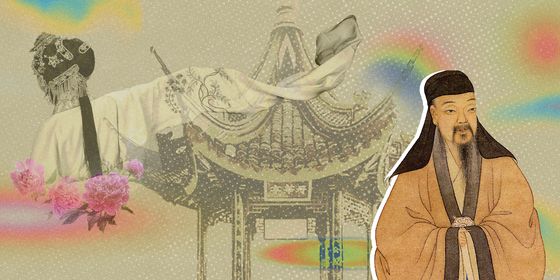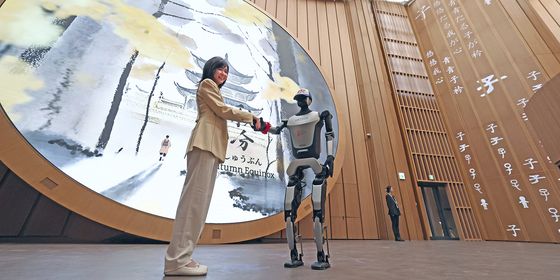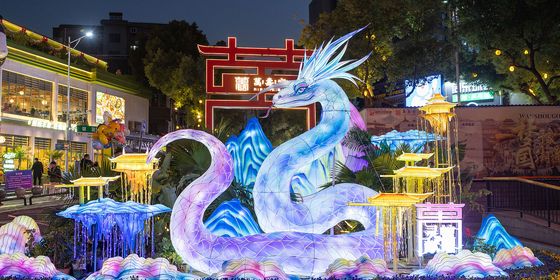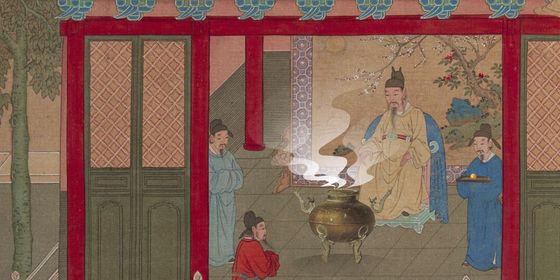Understanding recent anti-Asian incidents through the lens of history
The first two months of 2017 have been, among many other things, testament against the assumption of many people—from Western politicians to starry-eyed Chinese university freshmen—that Asian people who live in the West are “model minorities” who do not experience racial violence.
Various news outlets have reported on several acts of anti-Asian aggression recently. These include the placement of a poster with racist messages on a Chinese-Australian’s construction site billboard (note the spelling and grammatical errors by the supposed “native” English-speaker), a Hmong family’s house getting graffitied with the word “Chinks” in Minnesota, and racist aggression targeting Chinese students at Columbia University in New York.
These are only a few of many incidents that have been reported, to say nothing of incidents that go unreported or everyday garden-variety race issues that are motivated more by ignorance than “hate,” though these are no less offensive.
It’d be a mistake, however, to attribute these issues only to our current political climate or the ever-popular reports of China or the Chinese behaving badly on the world’s stage (which are, of course, not written without their own biases). Want to have a conversation with Chinese visitors, temporary residents, and immigrants about things they might be experiencing abroad today? Or maybe you are a Chinese person preparing to go overseas (or have family there) and want to make sense of these worrying incidents? Here’s a crash course on the history of anti-Chinese sentiment, starting with the place where it’s been the most well-documented and is typically highest on our radars of tolerant and multicultural societies: North America.
Historically speaking, Chinese as well as other Asian immigrants to the US and Canada have been subject to discriminatory immigration policy, as well as racist treatment when they did make it in. In the United States, the Chinese Exclusion Act of 1882 prohibited the immigration of Chinese people into the States. It was the first and only time (so far) that a US law barred immigrants of a specific ethnic origin, and, while repealed in 1943, it was essentially in effect until 1965 through a quota system imposed on the number of immigrants that the US would accept. Ever wonder why mid-century America is remembered as a picket-fenced Caucasian paradise until all these Asians suddenly started coming in, seemingly as a horde? It’s because their numbers were unnaturally restricted before.
But back to the Exclusion Act era: During this time, Chinese-Americans were generally barred from owning land and attaining naturalization by being treated as aliens even if they were born in the States. They were also targets of work discrimination and physical violence, even being massacred and driven out of towns in anti-Chinese riots. There are small towns all along the West Coast of the US that used to have their own small Chinatowns until riots and officially organized pogroms drove their Chinese residents to large cities for safety in numbers, not that they were always safer there; Bellingham and Tacoma, Washington, are among some that have recently made acknowledgements of this violent history.
In Canada, the Chinese Immigration Act of 1923 almost entirely banned the migration of Chinese into Canada. This was the only law in Canada that banned a specific nationality from entering the country. An earlier law, the 1885 Act to Restrict and Regulate Chinese Immigration, introduced a head tax system, requiring Chinese people to pay 50 Canadian dollars—later 100, then 500— per person to enter Canada, which was a prohibitive amount back then and essentially barred all new Chinese immigration.
It also required Chinese immigrants to pay for their right to own land: $10 when the law was enacted, later increased to $500 in 1903 (according to the Bank of Canada, 500 Canadian dollars in 1914 is equal to approximately 10,500 Canadian dollars or 8,000 US dollars). These acts were in effect until 1947—when Canada signed the UN Charter of Human Rights, which contravened the Acts of 1885 and 1923.
Moving on from state-sanctioned racial discrimination, anti-Chinese statements were prevalent in all sectors of society. These statements can be generalized as “Yellow Peril”—see if they reminds you of anything today: the Chinese are taking jobs from “real” citizens of this country by providing cheap labor; there are too many Chinese and they are tarnishing white civilization; the Chinese that move to “our” country are not assimilating into society.
The argument about Chinese taking away jobs from the white population was in fact instrumental in the enactment of anti-Chinese immigration laws in the United States and Canada. It was repeated by working-class citizens and new white immigrants, local and national politicians, and in newspapers. In the United States and Canada, Chinese laborers were instrumental to building the Central Pacific and Transcontinental Railroads and the Canadian Pacific Railway.
When both of those massive projects were completed, it raised fears among white workers that the Chinese laborers would now come for their jobs in other sectors. The Chinese themselves were blamed for the fact that employers sometimes preferred Chinese workers to white workers. Today, we don’t have to strain hard to hear this same sentiment about Chinese and other immigrants in North America, the indignation suggesting that immigrants force businesses to hire them, rather than employers being pleased to exploit desperate people.
The argument that Chinese have an unfair advantage over whites in the labor market was, a century ago, linked to the white social perception of Chinese people. This perception was generally negative and tempered with the idea that Chinese people are so far-flung from the civilization of the whites that they were “unassimilable.” Supporters of Chinese immigration restrictions argued that Chinese men, unlike white men, did not have families to support (except they actually did remit money home, but couldn’t bring their families over because they couldn’t afford it or because of—what else?—immigration laws, but who are we to argue with logic here?). This frames white men as the heads of good, Christian family units, while making Chinese immigrants seem opportunistic and immoral.
There was also the idea that because Chinese immigrants lived in poor conditions, they were inherently more capable of living in such conditions which white people simply could not abide because they were used to a higher living standard. To add to a rhetoric that generally describes Chinese as “beasts” (see previous link), people thought that Chinese carried diseases and that Chinatowns were disgusting nests of grossness.
To top it all off, it was broadly thought that Chinese men had terrible habits, such as smoking opium and hiring prostitutes. Surely, none of these arguments have been made considering the fact that various taxes and laws discouraged the immigration of Chinese wives and women generally to the States and Canada, as well as prohibiting Chinese men from owning land, owning most types of businesses, as well as denying Chinese people other rights that could elevate their positions in society (like studying for a professional degree like doctor or lawyer, which, in parts of Canada, was also a prerequisite for getting the right to vote at one time) .
Unfortunately, like 100 years ago, new Chinese immigrants and visitors, as well as students from China studying in American or Canadian high schools and universities, still have to deal with hate. This is a racism that sees its justification in demanding that Chinese assimilate completely into the new culture: start eating Western foods or not-weird versions of Chinese food, speak English with an acceptably white accent, and participating in Western culture, such as celebrating Christmas (and never, as we’re told, just “the holidays”).
Han, a young Chinese woman who studied at a large university in Vancouver, Canada, has had a few experiences with racism. Right after arriving to Vancouver for the very first time in 2015, Han and two friends, also Chinese women, went to a pharmacy to purchase some toiletries. Han bought a tube of lipstick, and just after they left the pharmacy, a random woman, who did not work at the pharmacy, stopped Han and accused her of stealing the item. The woman demanded to see Han’s receipt. “I was totally shocked at that time and also confused.” Han showed her accuser the receipt, and, satisfied that Han had paid for her lipstick, the woman “left without any apologies.” “[W]e all felt hurt after it and I thought she discriminated Asian people and wanted to make us feel embarrassed,” Han says.
Another instance of discriminatory behavior occurred less than a year later when Han was at an airport shop when visiting New York. When she paid for her purchases, the two cashiers asked her where she was flying to. “I said ‘Canada.’ And they started to laugh and asked me to [say] ‘Canada’ again. After I said [‘Canada’] again, they were still laughing and talked about my accent and imitated me…I felt they behaved very rudely.”
By themselves, these incidents don’t seem worth discussing. You might say they are nothing compared with how Chinese immigrants of 100 years ago had to flee for their lives out of American and Canadian towns, or other racial minorities that still face regular physical violence in North American cities today.
However, these moments remind us that historical and contemporary racism are linked, and that dealing with these issues requires us to examine how that time-honored national “identity” we take for granted was actually born and bred in systemized discrimination and violence. Next time you see Chinese businessmen in a film portrayed as sly and conniving, or the mockery of Chinese accents in Western comedy—remember that it’s just part of a long struggle. Smaller acts such as getting a name-tag ripped off or being accused of shoplifting become more distressing in context of the history of anti-Chinese discrimination, but they also bring us—whether living in the West, or preparing to move there or visit from China—a better understanding of what we’ve achieved and the work we have yet to do.
Big thanks to Hatty Liu for her contributions to this abridged history.
Cover image, depicting an anti-Chinese riot in 1880 Denver, USA from Wikimedia Commons.












